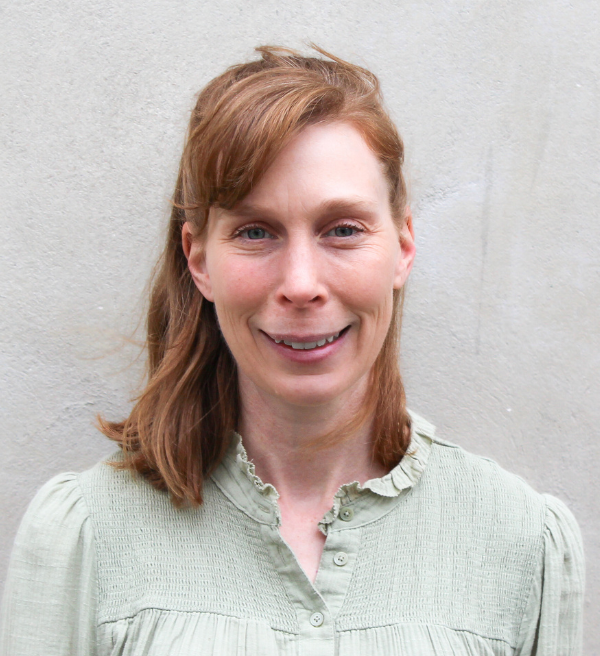Christina is a geographer and social scientist specialised in northern governance, public policy, and research questions concerning housing, health and environment within Arctic and subarctic places. Her PhD. uses a mixed methods approach to investigate housing insecurity and homelessness in Inuit Nunangat (Nunavut and Nunatsiavut, the Eastern Canadian Arctic) and the welfare of women, children and families. Past projects have focused on energy security, water security, food security, and sustainable community development in the context of climate change, among other variables, in Arctic Canada and West Greenland.
Research Fellow
Christina Goldhar
Spatial Story
I was born and raised in Toronto, a bustling and vibrant multi-cultural city that residents jokingly refer to as the center of the world. Between then and now I have lived in many different places, cast as both ‘center’ and ‘periphery’ in the stories we tell ourselves. My undergraduate studies brought me to Montréal and McGill University where I learned about climate change for the first time. An awareness that climate change wasn’t a problem of the future, despite it often being framed that way, but a problem of the present for many peoples, including Inuit and other Arctic residents, led me northwards. Since that time, I have been working with northern and Arctic communities on research focused on the health and welfare implications of climate change, housing need, and the challenge of sustainable community planning and development. This work has brought me to West Greenland where I studied the implications of climate change on food security in Qeqertarsuaq, to Nunavut where I studied climate change and hunter safety, as well as gendered experiences of housing insecurity and homelessness, and to Nunatsiavut, where I lived and worked for five years, and where I returned to develop my PhD research project.
The Arctic is often represented as a place in a constant state of reinvention, as a place that is new or becoming and that we understand through a focus on changes occurring or changes to come. However, first and foremost, the Arctic is a homeland. It is the homeland of Inuit, Kalaallit, and Sámi, among other peoples, for whom the Arctic is not ‘isolated and remote’, it is a center, and it is home. The significance and tensions of these contrasting meanings create the Arctic and our perceptions of it as a place. Now in Stockholm at Nordregio, I have the opportunity to continue working with Arctic peoples and in Arctic places, approaching my understanding of the region not through the lens of newness and reinvention, but through the lens of ‘home’.
Publications
Christensen, J., Goldhar, C., and Pugsley, A. (in press) Housing Policy in the Northern Territories: Yukon, Northwest Territories and Nunavut. In Housing Policy in Canada. University of Toronto Press.
Christensen, J., Goldhar, C., Herskovits, J., McCartney, S., Riva, M., and Schiff, R. (2025) Reframing northern Indigenous housing policy in Canada. International Journal of Housing Policy. https://doi.org/10.1080/19491247.2024.2435093
Christensen, J., Goldhar, C., Herskovits, J., McCartney, S., Riva, M., and Schiff, R. (2023) ‘Community self-determination can address the northern housing crisis’. Policy Options. April 18, 2023.
Goldhar C, Frenette A, Pugsley A, Browne D, Hackett K, Madsen V, McNaughton G, Christensen J. (2022) ‘Critical northern geography: A theoretical framework, research praxis and call to action in our (post) pandemic worlds’. ACME: An international journal for critical geographers. 21 (3).
Goldhar C, Frenette A, Fraser C and Christensen J. (2021) ‘Return to normal’ travel and research may bring hazards to northern, Indigenous communities. The Conversation. July 8, 2021.
Riedlsperger R, Goldhar C, Sheldon T, and Bell T. (2017) Meaning and means of ‘sustainability’: An example from the Inuit Settlement Regions of Nunatsiavut, Northern Labrador. In Northern Sustainabilities: Understanding and addressing change in the circumpolar world. Eds. Fondahl G and Wilson G. Springer.
Goldhar C, Bell T, and Wolf J. (2014) Vulnerability to freshwater changes in the Inuit Settlement Region of Nunatsiavut, Labrador: A case study from Rigolet. Arctic. 67(1): 71-83.
Goldhar C, Bell T, and Wolf J. (2013) Rethinking existing approaches to water security in remote communities: An analysis of two drinking water systems in Nunatsiavut, Labrador, Canada. Water Alternatives. 6(3): 462-486.
Ford J and Goldhar C. (2012) Climate change vulnerability and adaptation in resource dependent communities: A case study from West Greenland. Climate Research. 54: 181-196.
Goldhar C, Ford J, and Berrang-Ford L. (2010) Prevalence of food insecurity in a Greenlandic community and importance of social-economic-environmental stressors. International Journal of Circumpolar Health. 69 (3) 285-303.
Goldhar C and Ford J. (2010) Climate change vulnerability and food security in Qeqertarsuaq, Greenland. In Community adaptation and vulnerability in arctic regions. Eds. Hovelsrud G and Smit B. Springer.
Goldhar C, Ford J, and Berrang-Ford L. (2009) Food security in Western Greenland: A case study from Qeqertarsuaq. In Sacred landscapes: Linking people, environment and world views.Eds. Oakes J, Riewe R; ten Bruggencate R and Cogswell A. Aboriginal Issues Press, University of Manitoba.
